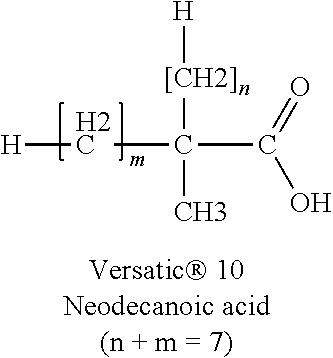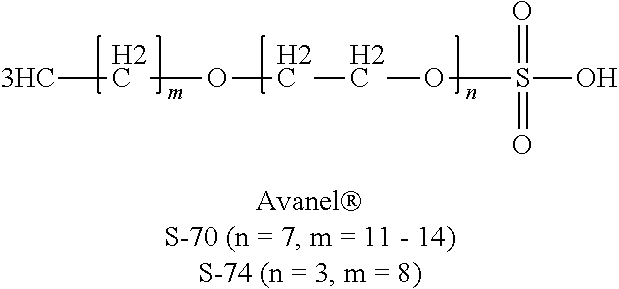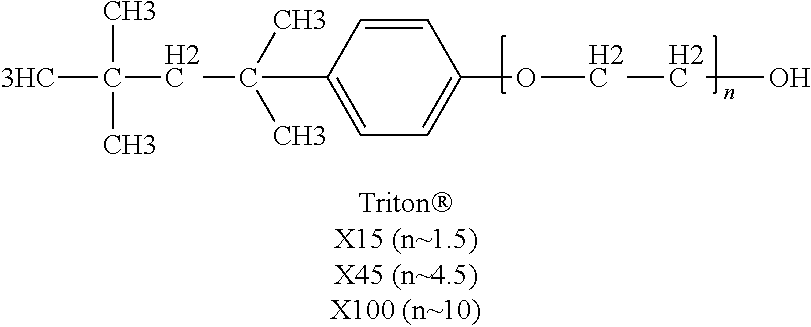Fluoropolymer dispersion treatment employing ultraviolet light and oxygen source to reduce fluoropolymer resin discoloration
a technology of fluoropolymer resin and dispersion treatment, which is applied in the field of thermally induced discoloration reduction of fluoropolymer resin, can solve the problems of fluoropolymer resin thermally induced discoloration, undesirable color formation or increase of fluoropolymer resin, and undesirable gray or brown color. , to achieve the effect of reducing thermally induced discoloration
- Summary
- Abstract
- Description
- Claims
- Application Information
AI Technical Summary
Benefits of technology
Problems solved by technology
Method used
Image
Examples
example 1
PTFE UVC, Ozone Injection, 3 Hours
[0104]To a glass beaker is added 153 gm of PTFE-1 dispersion as described above having 19.6% solids. The net weight is raised to 600 gm with deionized water, thus reducing the % solids to 5 wt %. A total of 1800 grams of dispersion thus prepared is added to a 2000 ml jacketed resin kettle. The dispersion is heated to 40° C. with agitation aided by continuous injection with ozone enriched air through two sintered glass, fine bubble, injection tubes. Ozone thus injected is provided by a Clearwater Technologies, Inc. Model CD-10 ozone generator which is operated at maximum power with an air feed rate of 100 cc / min. Two 10 watt 254 nm UV lights as described in 10 watt UVC Light Source are immersed in the dispersion. The lights are energized for 3 hours. The resulting, treated dispersion is coagulated and isolated as described above, dried in the apparatus for drying of PTFE polymers and finally evaluated for thermally induced discoloration. L* obtained ...
example 2
PTFE UVC, O2 Injection, 3 Hours
[0105]Example 1 is repeated except pure oxygen is injected to the dispersion during exposure to UVC light. The resulting L* is 60.1 providing a % change in L* of 37.3%, indicating a much improved color after treatment. The measured color is shown in Table 1.
example 3
PTFE UVC, Air Injection, 3 Hours
[0106]Example 1 is repeated except air is injected to the dispersion during exposure to UVC light. The resulting L* is 54.7, providing a % change in L* of 24.9%, indicating a much improved color after treatment. The measured color is shown in Table 1.
PUM
| Property | Measurement | Unit |
|---|---|---|
| temperature | aaaaa | aaaaa |
| melt viscosity | aaaaa | aaaaa |
| melt creep viscosity | aaaaa | aaaaa |
Abstract
Description
Claims
Application Information
 Login to View More
Login to View More - R&D
- Intellectual Property
- Life Sciences
- Materials
- Tech Scout
- Unparalleled Data Quality
- Higher Quality Content
- 60% Fewer Hallucinations
Browse by: Latest US Patents, China's latest patents, Technical Efficacy Thesaurus, Application Domain, Technology Topic, Popular Technical Reports.
© 2025 PatSnap. All rights reserved.Legal|Privacy policy|Modern Slavery Act Transparency Statement|Sitemap|About US| Contact US: help@patsnap.com



